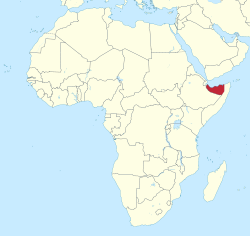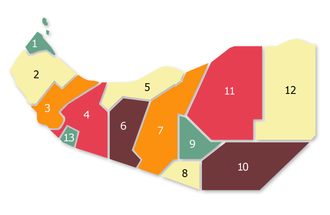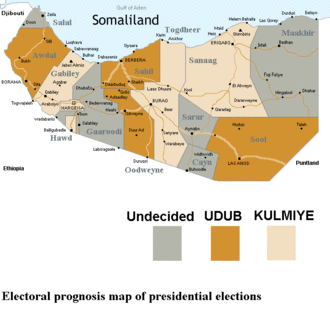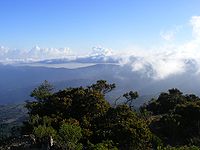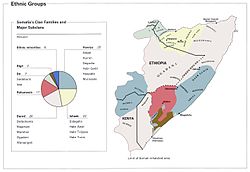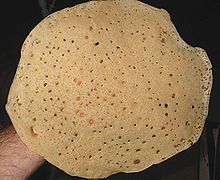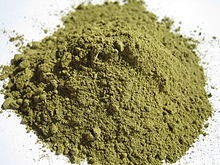
Somaliland
Did you know...
SOS Children made this Wikipedia selection alongside other schools resources. Click here to find out about child sponsorship.
| Somaliland Jamhuuriyadda Somaliland ( Somali)
جمهورية أرض الصومال (Arabic) Jumhūrīyat Arḍ aṣ-Ṣūmāl Republic of Somaliland |
||||||
|---|---|---|---|---|---|---|
|
||||||
| Motto: لا إله إلا الله محمد رسول الله (Arabic) Lā ilāhā illā-llāhu; muhammadun rasūlu-llāhi " There is no god but God; Muhammad is the Messenger of God" |
||||||
| Anthem: Samo ku waar Long life with peace |
||||||
|
|
||||||
| Capital | Hargeisa 9°33′N 44°03′E |
|||||
| Official languages |
|
|||||
| Demonym | Somali Somalian
|
|||||
| Government | Constitutional presidential republic | |||||
| - | President | Ahmed Mahamoud Silanyo | ||||
| - | Vice-President | Abdirahman Saylici | ||||
| - | Speaker of the House | Abdirahman Mohamed Abdullahi | ||||
| Legislature | Parliament | |||||
| - | Upper house | House of Elders | ||||
| - | Lower house | House of Representatives | ||||
| Independence from Somalia | ||||||
| - | Proclaimed | 18 May 1991 | ||||
| - | Recognition | Unrecognized | ||||
| Area | ||||||
| - | Total | 137,600 km2 68,000 sq mi |
||||
| Population | ||||||
| - | 2008 estimate | 3,500,000 | ||||
| - | Density | 25/km2 51/sq mi |
||||
| Currency | Somaliland shillinga ( SLSH) |
|||||
| Time zone | EAT ( UTC+3) | |||||
| - | Summer ( DST) | not observed ( UTC+3) | ||||
| Date format | d/m/yy (AD) | |||||
| Drives on the | right | |||||
| Calling code | +252 (Somalia) | |||||
| Internet TLD | .so | |||||
| a. | Currency only valid for regional use. | |||||
| Rankings unavailable as Somaliland is unrecognised. | ||||||
Somaliland ( Somali: Somaliland, Arabic: سُومَالِلَاند Ṣūmālilānd or أرض الصومال Arḍ aṣ-Ṣūmāl) is an unrecognised self-declared de facto sovereign state that is internationally recognised as an autonomous region of Somalia. The government of Somaliland regards itself as the successor state to the British Somaliland protectorate, which was independent on 26 June 1960 as the State of Somaliland, before uniting with the Trust Territory of Somalia (the former Italian Somaliland) on 1 July 1960 to form the Somali Republic.
Somaliland is bordered by Ethiopia in the south and west, Djibouti in the northwest, the Gulf of Aden in the north, and the autonomous Puntland region of Somalia to the east.
In 1988, the Siad Barre regime committed massacres against the people of Somaliland, which were among the events that led to the Somali Civil War. The war left the economic and military infrastructure severely damaged. After the collapse of the central government in 1991, the local government, led by the Somali National Movement (SNM), declared independence from the rest of Somalia on 18 May of the same year.
Since then, the territory has been governed by an administration that seeks self-determination as the Republic of Somaliland ( Somali: Jamhuuriyadda Somaliland, Arabic: جمهورية صوماللاند Jumhūrīyat Ṣūmālilānd). The local government maintains informal ties with some foreign governments, who have sent delegations to Hargeisa. Ethiopia also maintains a trade office in the region. However, Somaliland's self-proclaimed independence remains unrecognised by any country or international organisation.
History
The earliest human artifacts in the area are the Laas Geel cave paintings, dating from before 3000 BC. The region is sometimes thought to be part of the Land of Punt. Islam was introduced to the northern Somali littoral early on from the Arabian peninsula, shortly after the hijra. Various Muslim Somali kingdoms were formed around this period in the area. Centuries later, in the 1500s, the Ottoman Empire occupied Berbera and environs. Muhammad Ali, Pasha of Egypt, subsequently established a foothold in the area between 1821 and 1841. In 1888, after signing successive treaties with the then ruling Somali Sultans such as Mohamoud Ali Shire of the Warsangali Sultanate, the British established a protectorate in the region referred to as British Somaliland. The British garrisoned the protectorate from Aden and administered it as part of British India until 1898. British Somaliland was then administered by the Foreign Office until 1905, and afterwards by the Colonial Office.
Generally, the British did not have much interest in the resource-barren region. The stated purposes of the establishment of the protectorate were to "secure a supply market, check the traffic in slaves, and to exclude the interference of foreign powers." The British principally viewed the protectorate as a source for supplies of meat for their British Indian outpost in Aden through the maintenance of order in the coastal areas and protection of the caravan routes from the interior. Hence, the region's nickname of "Aden's butcher's shop". Colonial administration during this period did not extend administrative infrastructure beyond the coast, and contrasted with the more interventionist colonial experience of Italian Somaliland.
The British Somaliland protectorate became briefly independent on 26 June 1960, with the Trust Territory of Somalia (the former Italian Somaliland) following suit five days later. On 1 July 1960, the two territories united as planned to form the Somali Republic. A government was formed by Abdullahi Issa, with Aden Abdullah Osman Daar as President and Abdirashid Ali Shermarke as Prime Minister (later to become President, from 1967 to 1969). On 20 July 1961 and through a popular referendum, the Somali people ratified a new constitution, which was first drafted in 1960. In 1967, Muhammad Haji Ibrahim Egal became Prime Minister, a position to which he was appointed by Shermarke. Shermarke would be assassinated two years later by one of his own bodyguards. His murder was quickly followed by a military coup d'état on 21 October 1969 (the day after his funeral), in which the Somalian Army seized power without encountering armed opposition. The putsch was spearheaded by Major General Mohamed Siad Barre, who at the time commanded the army. The new regime would go on to rule Somalia for the next 21 years. By the 1990s, the moral authority of Barre's government had collapsed. Many Somalis had become disillusioned with life under military dictatorship. The government became increasingly totalitarian, and resistance movements, encouraged by Ethiopia, sprang up across the country, eventually leading to the Somali Civil War. Among the militia groups was the Isaaq-led Somali National Movement (SNM), based in Hargeisa.
Although the SNM at its inception had a unionist constitution, it eventually began to pursue independence, looking to secede from the rest of Somalia. Under the leadership of Abdirahman Ahmed Ali Tuur, the local administration declared the northwestern Somali territories independent at a conference held in Burao between 27 April 1991 and 15 May 1991. Tuur then became the newly established Somaliland polity's first President, but subsequently renounced the separatist platform in 1994 and began instead to publicly seek and advocate reconciliation with the rest of Somalia under a power-sharing federal system of governance. Muhammad Haji Ibrahim Egal was appointed as Tuur's successor in 1993 by the Grand Conference of National Reconciliation in Borama, which met for four months, leading to a gradual improvement in security, as well as a consolidation of the new territory. Egal was reappointed in 1997, and remained in power until his death on 3 May 2002. The vice president, Dahir Riyale Kahin, who was during the 1980s the highest-ranking National Security Service (NSS) officer in Berbera in Siad Barre's government, was sworn in as president shortly afterwards. In 2003, Kahin became the first elected president of Somaliland.
The war in southern Somalia between Islamist insurgents on the one hand, and the Transitional Federal Government (TFG) and its African Union allies on the other, has for the most part not directly affected Somaliland, which, like neighboring Puntland, has remained relatively stable.
Politics and government
Somaliland formed a hybrid system of governance under the Constitution of Somaliland, combining traditional and western institutions. In a series of inter-clan conferences, culminating in the Boorama Conference in 1993, a qabil (clan or community) system of government was constructed. The constitution separates government into an executive branch, a legislative branch, and a judicial branch, each of which functions independently from the others.
A traditional Somali council of elders, known as the guurti, that included wise men from every clan, was formed by the Somali National Movement after the fall of Somalia's Barre regime. The guurti worked with rebel leaders to set up a new government, and was incorporated into the governance structure, becoming the Parliament's House of Elders. The government became in essence a "power-sharing coalition of Somaliland's main clans," with seats in the Upper and Lower houses proportionally allocated to clans according to a predetermined formula, although not all clans are satisfied with their representation. In 2002, after several extensions of this interim government, Somaliland transitioned to multi-party democracy. The election was limited to three parties, in an attempt to create ideology based elections rather than clan based elections.
The Executive is led by an elected President, whose government includes a vice-President and a Council of Ministers. The Council of Minister, who are responsible for the normal running of government, are nominated by the President and approved by the Parliament's House of Representatives. The President must approve bills passed by the Parliament before they come into effect. Presidential elections are confirmed by the National Elections Commission. The President can serve a maximum of two five-year terms.
Legislative power is held by the bicameral Parliament. Its upper house is the House of Elders, and the lower house is the House of Representatives. The lower house is chaired by Abdirahman Mohamed Abdullahi. Each house has 82 members. Members of the House of Elders are elected indirectly by local communities for six-year terms. The House of Elders shares power in passing laws with the House of Representatives, and also has the role of solving internal conflicts, and an exclusive power to extend the terms of the President and representatives under circumstances that make an election impossible. Members of the House of Representatives are directly elected by the people for five-year terms. The House of Representatives shares voting power with the House of Elders, though it can pass a law that the House of Elders rejects if it votes for the law by a 2/3's majority, and has absolute power in financial matters and confirmation of Presidential appointments (except for the Chief Justice of the Supreme Court). However, the Parliament provides weak oversight of the executive branch.
The judicial system is divided into district courts, (which deal with matters of family law and succession, lawsuits for amounts up to 3 million SL, criminal cases punishable by up to 3 years imprisonment or 3 million SL fines, and crimes committed by juveniles), regional courts (which deal with lawsuits and criminal cases not within the jurisdiction of district courts, labour and employment claims, and local government elections), regional appeals courts (which deal with all appeals from district and regional courts), and the Supreme Court (which deals with issues between courts and in government, and reviews its own decisions), which is the highest court and also functions as the Constitutional Court.
Somaliland has three political parties: the United Peoples' Democratic Party, the Peace, Unity, and Development Party, and the Justice and Development Party. Under the Somaliland Constitution, a maximum of three political parties are allowed, and parties defined by religion or clan are prohibited, though all three parties are closely affiliated with a clan.
Foreign relations
Somaliland has political contacts with its neighbours Ethiopia, and Djibouti, as well as with Belgium, France, Ghana, Kenya, South Africa, Sweden, and the United Kingdom. On 17 January 2007, the European Union (EU) sent a delegation for foreign affairs to discuss future cooperation. The African Union (AU) has also sent a foreign minister to discuss the future of international acknowledgment, and on 29 and 30 January 2007, the ministers stated that they would discuss acknowledgement with the organisation's member states In June 2007, Ethiopian Prime Minister Meles Zenawi held a conference with Somaliland's President Kahin, during which he was referred to in an official communique by the Ethiopian Foreign Ministry as the President of Somaliland, the first time that Somaliland has been officially referred to as a sovereign state by a foreign government. While this is not claimed as a move to official recognition by Ethiopia, it is seen as a possible step toward a unilateral declaration by Ethiopia in the event of the AU failing to move its recognition of Somaliland forward.
In early 2006, the National Assembly of Wales extended an official invitation to the Somaliland government to attend the royal opening of the Senedd in Cardiff. The move was seen as an act of recognition by the Welsh Assembly of the breakaway government's legitimacy. The Foreign and Commonwealth Office made no comment on the invitation. Wales is home to a significant Somaliland expatriate community.
In 2007, a delegation led by President Kahin was present at the Commonwealth Heads of Government Meeting in Kampala, Uganda. Although Somaliland has applied to join the Commonwealth under observer status, its application is still pending.
On 27 November 2007, Annemie Neyts-Uyttebroeck of the ELDR, one of three main parties in the EU, mailed a letter to the then-EU High Representative Javier Solana, and to President Kahin of Somaliland, which called upon the EU to recognise Somaliland. In December 2007, the United States government discussed whether to back the shaky transitional government in Mogadishu or to acknowledge and support the less volatile Somaliland secessionists.
On 24 September 2010 Johnnie Carson, Assistant Secretary of State for African Affairs, stated that the United States would be modifying its strategy in Somalia and would seek deeper engagement with the governments of Somaliland and Puntland while continuing to support the Somali Transitional Government. Carson said the US would send aid workers and diplomats to Puntland and Somaliland and alluded to the possibility of future development projects. However, Carson emphasized that the U.S. would not extend formal recognition to either region. The current UK Minister for Africa, Henry Bellingham MP, met President Silanyo of Somaliland in November 2010 to discuss ways in which to increase the UK's engagement with Somaliland. President Silanyo said during his visit to London: "We have been working with the international community and the international community has been engaging with us, giving us assistance and working with us in our democratisation and development programmes. And we are very happy with the way the international community has been dealing with us, particularly the UK, the US, other European nations and our neighbours who continue to seek recognition."
In 2011, Somaliland and the neighboring Puntland region each entered a security-related memorandum of understanding with the Seychelles. Following the framework of an earlier agreement signed between the Transitional Federal Government and the Seychelles, the memorandum is "for the transfer of convicted persons to prisons in "Puntland" and "Somaliland"".
Border disputes
Somaliland continues to claim the entire area of the former British Somaliland. It is currently in control of the western half of the former British Somaliland, with northeastern Maakhir having declared itself a separate, unrecognised autonomous state within Somalia in July 2007, and the disputed southeastern Sool state had been under the control of neighbouring Puntland from 2003 until 2008. A coalition of Gadabuursi intellectuals hailing from the westernmost Awdal province have threatened to secede if Somaliland's independence is recognised.
Tensions between Puntland and Somaliland escalated into violence several times between 2002 and 2009. In October 2004, and again in April and October 2007, armed forces of Somaliland and Puntland clashed near the town of Las Anod, the capital of Sool region. In October 2007, Somaliland troops took control of the town. While celebrating Puntland's 11th anniversary on 2 August 2009, Puntland officials vowed to recapture Las Anod. While Somaliland claims independent statehood and therefore 'split up' the 'old' Somalia, Puntland works for the re-establishment of a united but federal Somali state.
Somaliland forces took control of the town of Las Qorey in eastern Sanaag on 10 July 2008, along with positions five kilometers east of the town. The defence forces completed their operations on 9 July 2008 after the Maakhir and Puntland militia in the area left their positions, but control of the territory was later assumed by Puntland as Maakhir was incorporated into the autonomous region in January 2009.
In the late 2000s, HBM-SSC (Hoggaanka Badbaadada iyo Mideynta SSC), a local unionist group based in Sanaag was formed with the goal to establish its own regional administration (Sool, Sanaag and Cayn, or SSC).
In 2010, the formation of a new autonomous region within a federal Somalia was also declared in the Awdal province. Referred to as Awdalland or the Awdal State, the local administration does not recognise the Somaliland government's claim to sovereignty or to its territory.
Military
The Somaliland Armed Forces are the main military command in Somaliland, and, along with the Police Force and all other internal security forces, are overseen by Somaliland's Ministry of Defence. The current head of Somaliland's Armed Forces is the Minister of Defence, Mudane Ahmed Haj Adami.
The Somaliland Army consists of twelve divisions equipped primarily with light weaponry, though it is equipped with some howitzers and mobile rocket launchers. Its armored vehicles and tanks are mostly of Soviet design, though there are some aging Western vehicles and tanks in its arsenal. The Somaliland Navy (often referred to as a Coast Guard by the Associated Press), despite a crippling lack of equipment and formal training, has apparently had some success at curbing both piracy and illegal fishing within Somaliland waters.
Administrative divisions
| Key | Region | Capital | Area km2 |
Population density km2 |
|---|---|---|---|---|
| 1 | Salal | Zeila | n/a | n/a |
| 2 | Awdal | Borama | n/a | n/a |
| 3 | Gabiley | Gabiley | n/a | n/a |
| 5 | Sahil | Berbera | n/a | n/a |
| 6 | Oodweyne | Oodweyne | n/a | n/a |
| 7 | Togdheer | Burao | n/a | n/a |
| 8 | Cayn | Buuhoodle | n/a | n/a |
| 9 | Sarar | Caynaba | n/a | n/a |
| 10 | Sool | Las Anod | n/a | n/a |
| 11 | Sanaag | Erigavo | n/a | n/a |
| 12 | Maakhir | Badhan | n/a | n/a |
| 13 | Hawd | Baligubadle | n/a | n/a |
| 14 | Maroodi Jeex | Hargeisa | n/a | n/a |
The main cities and towns in Somaliland:
- Hargeisa (Hargeysa), capital
- Boorama (Borama)
- Berbera
- Burco (Burao)
- Ceerigaabo (Erigabo)
- Xiis (Heis)
- Ceel-Afwey (Eel-Afweyn)
- Gar-adag (Gar-adag)
- Shalcaw (Shal-aw)
- Karin
- Caynaba (Aynaba)
- Badhan
- Lasqoray
- Maydh
- Dilla
- Las Anod (Laascaanood)
- Gabiley (Gabileh)
- Baligubadle
- Zeila (Saylac)
- Oodweyne
- Yubbe
- Badhan
- Lasqoray
- Duruqsi (Burao)
| State | Capital | Annexed |
|---|---|---|
| Gabiley | Gabiley | Maroodi Jeex |
| Maakhir | Badhan | Sanaag |
| Cayn | Buhoodle | Togdheer |
| Salal | Zeila | Awdal |
| Sarar | Caynaba | Sool |
| Oodweyne | Oodweyne | Togdheer |
| Hawd | Baligubadle | Maroodi Jeex |
16 new Districts:
| District | Region | Annexed Region |
|---|---|---|
| Haji Salax | Oodweyne | Togdheer |
| Kalabaydh | Sool region | – |
| Wajale | Gabile | Hargeysa |
| Widh-widh | Buhoodle | Sool |
| Qorulugad | Buhoodle | Togdheer |
| Go'Da Weyne | Sahil | – |
| Harasheekh | Oodweyne | Togdheer |
| Raydab Khatumo | Oodweyne | Togdheer |
| Garba Dardar | Salal | Awdal |
| Boon | Sala | Awdal |
| Harirad | Salal | Awdal |
| Las Idle | Sahil | – |
| War Idad | Sarar | Togdheer |
| Yubbe | Sanaag | Maakhir |
| Elal | Sarar | Togdheer |
| War Imran | Togdheer | – |
| Magalo Ad | Awdal | – |
Geography
Somaliland is situated in northwestern Somalia. It lies between the 08°00' – 11°30' parallel north of the equator and between 42°30' – 49°00' meridian east of Greenwich. It is bordered by Djibouti to the west, Ethiopia to the south, and the Puntland region of Somalia to the east. Somaliland has a 740 kilometres (460 mi) coastline with the majority lying along the Gulf of Aden. The region is slightly larger than England, with an area of 137,600 km2 (53,100 sq mi).
Somaliland's climate is a mixture of wet and dry conditions. The northern part of the region is hilly, and in many places the altitude ranges between 900 and 2,100 metres (2,953 and 6,890 ft) above sea level. The Awdal, Saaxil and Maroodi Jeex (Woqooyi Galbeed) regions are fertile and mountainous, while Togdheer is mostly semi-desert with little fertile greenery around. The Awdal region is also known for its offshore islands, coral reefs and mangroves.
A scrub-covered, semi-desert plain referred as the Guban lies parallel to the Gulf of Aden littoral. With a width of twelve kilometers in the west to as little as two kilometers in the east, the plain is bisected by watercourses that are essentially beds of dry sand except during the rainy seasons. When the rains arrive, the Guban's low bushes and grass clumps transform into lush vegetation. This coastal strip is part of the Ethiopian xeric grasslands and shrublands ecoregion.
Cal Madow is a mountain range in the northern part of the country. Extending from the northwest of Erigavo to several kilometers west of the city of Bosaso, it features Somalia's highest peak, Shimbiris, which sits at an elevation of about 2,416 metres (7,927 ft). The rugged east-west ranges of the Karkaar Mountains also lie to the interior of the Gulf of Aden littoral. In the central regions, the northern mountain ranges give way to shallow plateaus and typically dry watercourses that are referred to locally as the Ogo. The Ogo's western plateau, in turn, gradually merges into the Haud, an important grazing area for livestock.
Economy
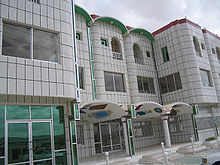
The Somaliland shilling, while stable, is not an internationally recognised currency and currently has no official exchange rate. It is regulated by the Bank of Somaliland, the central bank, which was established constitutionally in 1994.
Since Somaliland is unrecognised, international aid donors have found it difficult to provide aid. As a result, the government relies mainly upon tax receipts and remittances from the large Somali diaspora contribute immensely to Somaliland's economy. Remittances come to Somaliland through money transfer companies, the largest of which is Dahabshiil, one of the few Somali money transfer companies to conform to modern money-transfer regulations. The World Bank estimates that remittances worth approximately $US 1 billion reach Somalia annually from emigres working in the United States, Europe, and the Gulf states. Analysts say that Dahabshiil may handle around two-thirds of that figure, and that as much as half of it reaches Somaliland alone.
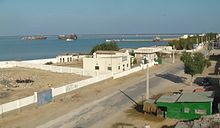
Since the late 1990s, service provision has significantly improved as a result of limited government provision and contributions from non-governmental organisations, religious groups, the international community (especially the Diaspora) and the growing private sector. Local and municipal governments have been developing the provision of key public services, such as water in Hargeisa and education, electricity and security in Berbera. In 2009, the Banque pour le Commerce et l'Industrie – Mer Rouge, based in Djibouti, opened a branch in Hargeisa, to become the first bank in the country since the collapse in 1990 of the Commercial and Savings Bank of Somalia.
Various telecommunications firms also have branches in Somaliland. Among these is Golis Telecom Somalia, one of the largest such operators in northern Somalia. Founded in 2002 with the objective of supplying the local market with GSM mobile services, fixed line and internet services, it has an extensive network that covers all of Somalia's major cities and more than 40 districts in both the Somaliland and Puntland regions. Golis also offers among the cheapest international calling rates, at $0.2 USD less than its nearest competitor. Other telecommunication firms serving the region include Telcom and NationLink.
Agriculture is generally considered to be a potentially successful industry, especially in the production of cereals and horticulture. Mining also has potential, though simple quarrying represents the extent of current operations despite the presence of hugely diverse quantities of mineral deposits.
Tourism
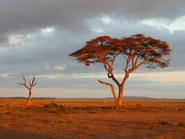
The rock art at Laas Gaal, situated on the outskirts of Hargeisa, are a popular local tourist attraction. Totalling ten caves, they were discovered by a French archaeological team in 2002, and are believed to date back around 5,000 years. The government and locals keep the cave paintings safe, and only a restricted number of tourists are allowed entry. Other notable sights include the Freedom Arch in Hargeisa and the war memorial in the city centre. Natural attractions are very common around the region. The Naasa Hablood are twin hills located on the outskirts of Hargeisa that Somalis in the region consider to be a majestic natural landmark.
The Ministry of Tourism has also encouraged travellers to visit historic towns and cities in Somaliland. The historic town of Sheekh is located near Berbera and is home to old British colonial buildings that have remained untouched for over forty years. Berbera also houses historic and impressive Ottoman architectural buildings. Another equally famous historic city is Zeila. Zeila was once part of the Ottoman Empire, a dependency of Yemen and Egypt and a major trade city during the 19th century. The city has been visited for its old colonial landmarks, offshore mangroves and coral reefs, and its towering cliffs and beach. The nomadic culture of Somaliland has also attracted tourists. Most nomads live in the countryside.
Transport
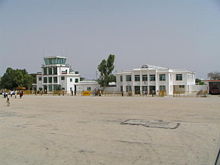
Bus services operate in Hargeisa, Burao, Gabiley, Berbera and Borama. There are also services between the major towns and adjacent villages operated by different types of vehicles such as 4 wheel drives and light goods vehicles (LGV).
The most prominent airline in Somaliland is Daallo Airlines, due to the demise of Somali Airlines following the Somali Civil War. It flies to Djibouti, Dubai, Jeddah and Addis Ababa, and offers flights for the Hajj and Umrah pilgrimages.
Demographics
Languages
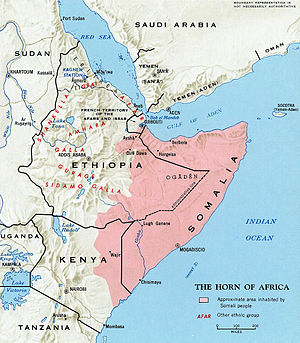
Most people in Somaliland speak two of the three official languages: Somali, Arabic and English. Article 6 of the Constitution of 2001 designates the official language of Somaliland to be Somali, though Arabic is a mandatory subject in school and is used in mosques around the region and English is spoken and taught in schools. English was proclaimed an official language later, outside the constitution.
Somali is a member of the Cushitic branch of the Afro-Asiatic language family, and its nearest relatives are the Afar and Oromo languages. Somali is the best documented of the Cushitic languages, with academic studies of it dating from before 1900.
As most people from Somaliland belong to the clan of Isaaq Arabic is the mother tongue but has lost its hold over the years but remains mandatory in school. Somaliland has the highest concentration of Arabic-speaking Somalis in the whole nation.
Somali dialects are divided into three main groups: Northern, Benaadir and Maay. Northern Somali (or Northern-Central Somali) forms the basis for Standard Somali. Benaadir (also known as Coastal Somali) is spoken on the Benadir coast from Cadaley to south of Merca, including Mogadishu, as well as in the immediate hinterland. The coastal dialects have additional phonemes which do not exist in Standard Somali. Maay is principally spoken by the Digil and Mirifle ( Rahanweyn) clans in the southern areas of Somalia.
Since Somali had long lost its ancient script, a number of writing systems have been used over the years for transcribing the language. Of these, the Somali alphabet is the most widely used, and has been the official writing script in Somalia since the government of former President of Somalia Siad Barre formally introduced it in October 1972.
The script was developed by the Somali linguist Shire Jama Ahmed specifically for the Somali language, and uses all letters of the English Latin alphabet except p, v and z. Besides Ahmed's Latin script, other orthographies that have been used for centuries for writing Somali include the long-established Arabic script and Wadaad's writing, in addition to various indigenous writing systems developed in the twentieth century.
Religion
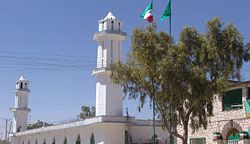
With few exceptions, Somalilanders are entirely Muslims, the majority belonging to the Sunni branch of Islam and the Shafi'i school of Islamic jurisprudence. As with southern Somali coastal towns such as Mogadishu and Merca, there is also a presence of Sufism, Islam's mystical dimension; particularly the Arab Rifa'iya tariiqa. Though traces of pre-Islamic traditional religion exist in Somaliland, Islam is important to the Somali sense of national identity. Many of the Somali social norms come from their religion. For example, Somali women wear a hijab when they are in public. In addition, Somalis abstain from pork and alcohol, and also try to avoid receiving or paying any form of interest ( usury). Muslims generally congregate on Friday afternoons for a sermon and group prayer.
Under the Constitution of Somaliland, Islam is the state religion of Somaliland, and no laws may violate the principles of Sharia. The promotion of any religion other than Islam is illegal, and the state promotes Islamic tenets and discourages behaviour contrary to Islamic morals.
Somaliland has very few Christians, and most have come from the schools and orphanages of the Roman Catholic missions of Aden, Djibouti, and of Berbera; the closest current diocese of any denomination is the Roman Catholic Diocese of Djibouti, to the north of Somaliland. No organized church operates in the territory. The Holy See does not recognize Somaliland as a sovereign state.
The colonial period saw some Roman Catholic missionary activity in Somaliland. British Somaliland was under the care of the Vicariate Apostolic of Arabia, as also the Vicariate Apostolic of the Gallas (including French Somaliland and the main territory of Ethiopia), confided to the Order of Friars Minor Capuchin. Italian Somaliland was detached in 1904 from the Vicariate Apostolic of Zanzibar, erected into the Prefecture Apostolic of Benadir, and confided to the ancient Order of the Holy Trinity or Trinitarians.
Culture
Clan system
The Somaliland region has a population of about 3.5 million people. Where the largest clan family in Somaliland are the Isaaq clan who are Somalia's third largest demographic group.
The clan groupings of the Somali people are important social units, and clan membership plays a central part in Somali culture and politics. Clans are patrilineal and are often divided into sub-clans, sometimes with many sub-divisions.
Somali society is traditionally ethnically endogamous. So to extend ties of alliance, marriage is often to another ethnic Somali from a different clan. Thus, for example, a recent study observed that in 89 marriages contracted by men of the Dhulbahante clan, 55 (62%) were with women of Dhulbahante sub-clans other than those of their husbands; 30 (33.7%) were with women of surrounding clans of other clan families ( Isaaq, 28; Hawiye, 3); and 3 (4.3%) were with women of other clans of the Darod clan family ( Majerteen 2, Ogaden 1).
The Isaaq constitute the largest Somali clan in most of Somaliland. They are concentrated in the Woqooyi Galbeed and Togdheer regions, alongside the indigenous people of Gabooye. The disputed eastern and western regions are predominantly inhabited by other clans. Sool's residents mainly hail from the Dhulbahante, a subdivision of the Harti confederation of Darod sub-clans. The Warsangali, another Harti Darod sub-clan, constitute the majority of people in Sanaag. The Gadabuursi are also well represented in the Awdal and Woqooyi Galbeed regions.
Cuisine
It is considered polite for one to leave a little bit of food on one's plate after finishing a meal at another's home. This tells the host that one has been given enough food. If one were to clean his or her plate that would indicate that one is still hungry. Most Somalis don't take this rule so seriously, but it is certainly not impolite to leave a few bits of food on one's plate. Traditionally, the main meal of the day is eaten at lunchtime and Somali people usually begin their day with a flatbread called laxoox (or lahoh), as well as liver, toast, cereal or porridge made of millet or cornmeal. Lunch can be a mixture of rice or pasta with meat and sauce. Also consumed during lunchtime is a traditional soup referred to as maraq, which is also part of Yemeni cuisine. Maraq is made of vegetables, meat and beans and is usually eaten with flatbread or pita bread. Later in the day, a lighter meal is served that includes beans, ful medames, muffo (patties made of oats or corn), hummus, or a salad with more laxoox/ injera. Turkish coffee and Turkish tea are also imbibed. The latter beverage has been adapted to form what is one of the most famous drinks in the region: Shaax Xawaash. Consumed by the majority of Somalis, Shaah Xawaash is made of cardamom (Xawaash) and cinnamon barks (Qoronfil).
Arts
Islam and poetry have been described as the twin pillars of Somali culture. Somali poetry is mainly oral, with both male and female poets. They use things that are common in the Somali language as metaphors. Most Somalis are Sunni Muslims and Islam is vitally important to the Somali sense of national identity. Most Somalis do not belong to a specific mosque or sect and can pray in any mosque they find.
Celebrations come in the form of religious festivities, two of the most important being Eid ul-Adha and Eid ul-Fitr, which marks the end of the fasting month. Families get dressed up to visit one another, and money is donated to the poor. Other holidays include 26 June and 18 May, which celebrate Somaliland's independence from Britain and Somalia respectively; the latter, however, is not recognised by the international community.
In a nomadic culture, where one's possessions are frequently moved, there is little reason for the plastic arts to be highly developed. Somalis embellish and decorate their woven and wooden milk jugs (haano; the most decorative jugs are made in Ceerigaabo) and wooden headrests. Traditional dance is also important, though mainly as a form of courtship among young people. The traditional dance known as the Ceeyar Somaali in the Somali language is Somaliland's favourite dance.
Also, an important form of art in Somaliland is henna painting (mehndi, Somali: Xenna). The henna plant is widely grown across the region and it was Arab merchants and settlers that first brought the art of henna painting to early Somaliland. During special occasions, a Somali woman's hands and feet are expected to be covered in decorative mendhi. Girls and women usually apply or decorate their hands and feet in henna on joyous celebrations like Eid or weddings. The henna designs vary from very simple to highly intricate. Compared to Pakistani, Indian or Bangladeshi henna designs, Arab designs are more modern and simple. Traditionally, only women apply this body art, as it is considered a feminine custom.
Henna is not only applied on the hands and feet but is also used as a dye. Somali men and women alike use henna as a dye to change their hair colour. Mostly, elderly men with grey hair apply this procedure because black hair dye is forbidden in Islam. Women are free to apply henna on their hair as most of the time they are wearing a hijab.


